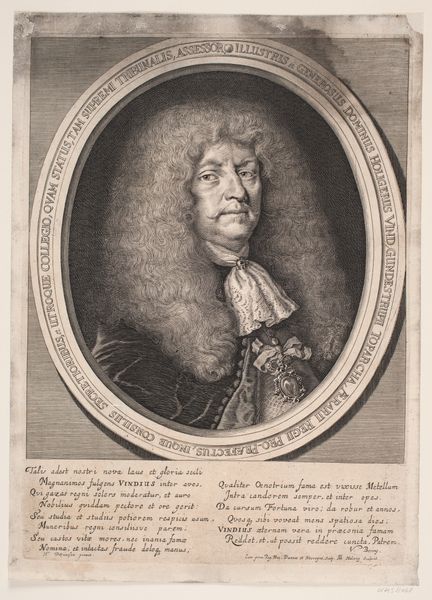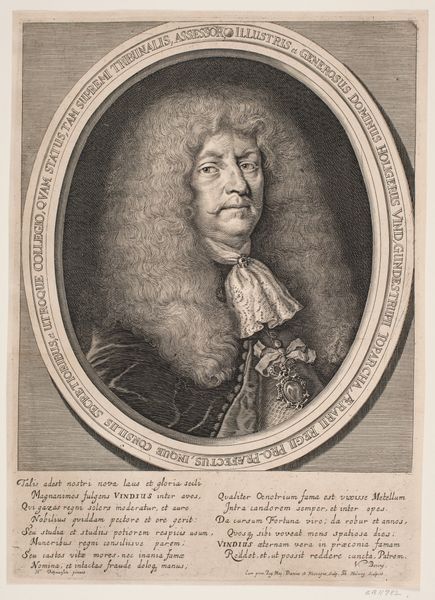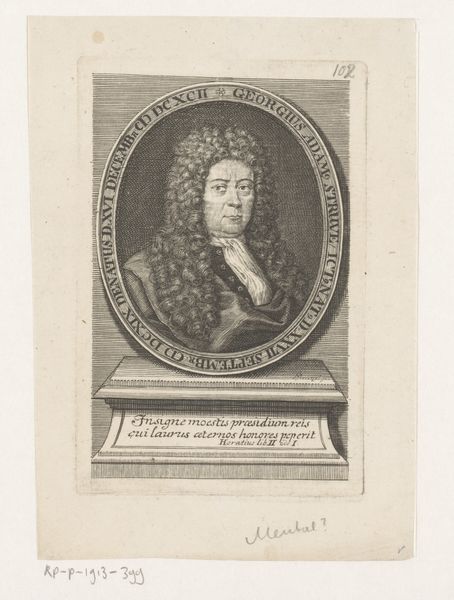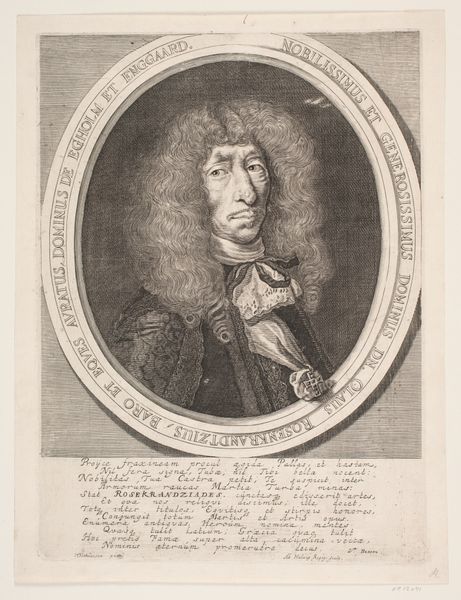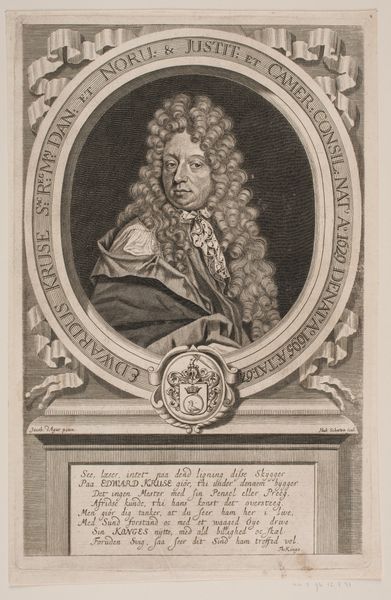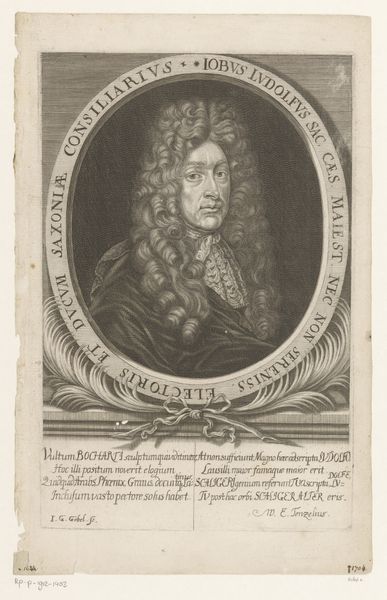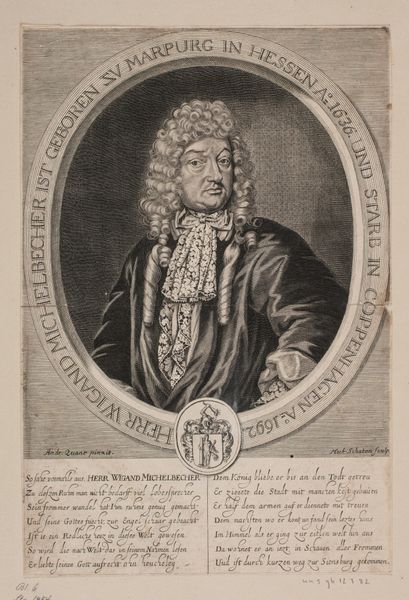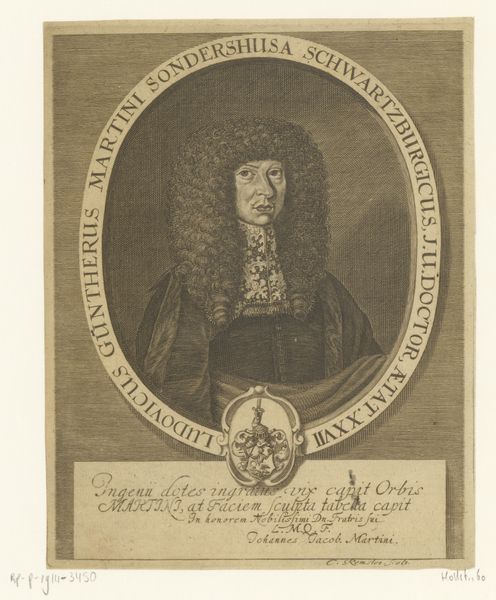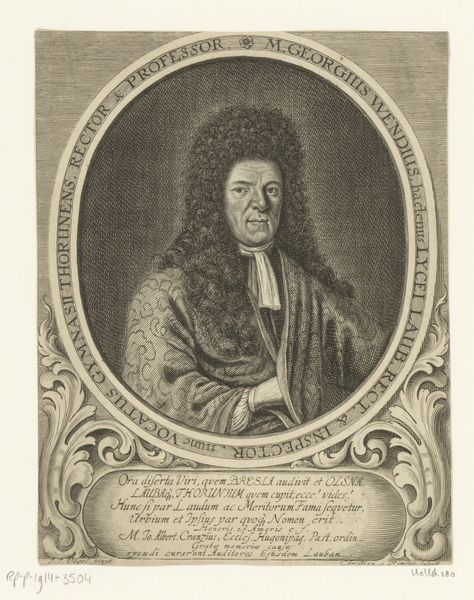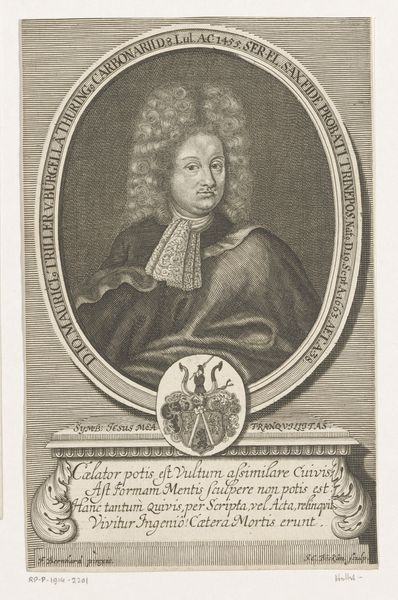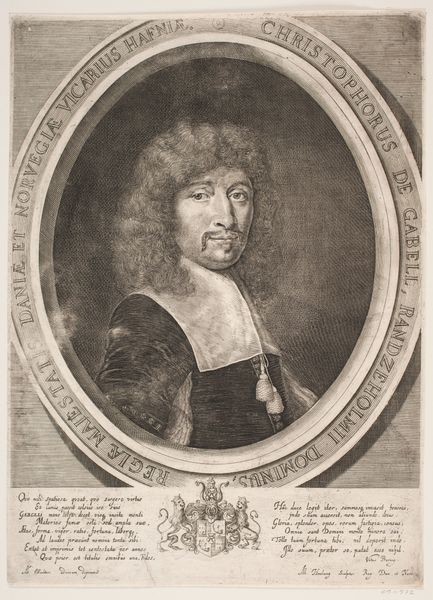
print, engraving
#
portrait
#
aged paper
#
toned paper
#
baroque
# print
#
old engraving style
#
engraving
#
columned text
Dimensions: 359 mm (height) x 260 mm (width) (bladmaal)
Curator: This engraving, created in 1675, depicts Vitus Bering. Editor: The immediate impact is one of somber authority, almost melancholic. Look at how the engraver used dense cross-hatching to create deep shadows, framing Bering’s face and suggesting an air of gravity and perhaps weariness. Curator: Indeed, Hubert Schaten has rendered a striking portrait using the engraving technique. The details in Bering’s wig and clothing, juxtaposed against the aged, toned paper, offer an interesting textural contrast. Observe the circular frame inscribed with text surrounding the image; it speaks to the importance and status that Bering held as an assessor. Editor: Contextualizing Bering within the 17th century lens illuminates certain power structures. This is an era of exploration and colonization, after all. So, seeing him portrayed with such pronounced status markers—the ornate wig, the official garments, the Latin inscriptions celebrating his role in high office—it begs the question: what power did he wield and over whom? Who did his explorations impact? Curator: While Schaten was active in Germany, Bering ultimately worked in the service of Russia. From a formal perspective, the inscription also highlights the circularity in baroque composition. The curves of the hair, the frame, it gives rhythm to the composition, does it not? Editor: It does create visual harmony, but also serves to encircle Bering’s figure. The artist could have done a lot with composition here to challenge, disrupt and ultimately humanize Bering, who we know undertook challenging journeys during which he encountered and interacted with indigenous peoples. I feel there’s little acknowledgement of these encounters. It's a very closed-off, formal portrait. Curator: Perhaps that speaks to the conventions of portraiture at the time. The engraving focuses on presenting him in his official capacity, a figure of authority. Editor: Right, and that reinforces existing hierarchies. But let's consider how this visual encoding shapes perceptions and impacts those without similar status. Ultimately, who is missing from this picture? Curator: Considering this engraving as a study in both Baroque portraiture and historical context opens intriguing avenues of interpretation. Editor: Absolutely, it allows us to connect the formal mastery of the work to larger dialogues around power, representation, and colonial legacies.
Comments
No comments
Be the first to comment and join the conversation on the ultimate creative platform.

